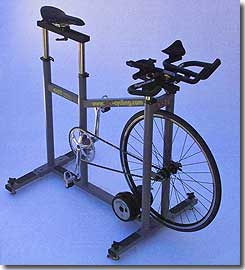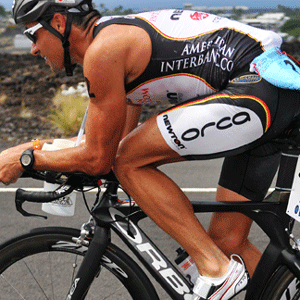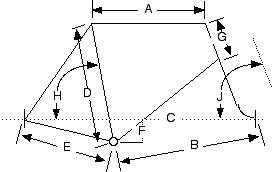F.I.S.T. Protocol
You'll want to follow the articles in succession, starting with Intro to the F.I.S.T. Method:
1. F.I.S.T. axioms
2. F.I.S.T. protocol <– You are here
3. Measuring conventions
4. Seat height
5. Cockpit length
6. Hip angle
7. Armrest drop
8. Tools of the trade
9. Your bike's "waistline"
10. Translating fit specs to bike specs
This is the third article of a series in which we lay out our process for tri bike fit. You should've read our article on F.I.S.T. axioms prior to this.
There are two ways a bike fit can be executed. It can be imposed on the athlete by the fitter, or the fitter can artfully enable a process by which the rider self-selects his position. The FIST system endorses the latter methodology, for a pair of reasons.
First, there is utility in performing several trials, at different seat angles, optimizing one's position at east seat angle. An athlete might enjoy a trial at, say, 75° of seat angle, then again at 77°, at 79°, and at 81°. In this case it's important that the rider's body's levers and muscle groups fire at one's best efficiency: that "nexus of power" spoken of earlier. The important components of this nexus of power are detailed below, in the discussion of "seat height" and "hip angle." This, combined with an attention to comfort, result in what we term an "optimized" position.
Once these rider positions at various successively steeper seat angles have been optimized, the rider must choose a seat angle among them. It is common for a rider to indicate a preference to two adjacent seat angles, and this may require repositioning the rider in both of these "finalist" positions before the rider can clearly determine a preference (or, perhaps the rider will prefer a seat angle in between, say, 78° instead of the 77° and 79° angles.

One can execute a FIST tri bike fit without the use of a position simulator, but the instant feedback such an apparatus offers makes this tool especially useful. My personal favorite, made by Ves Mandaric of a design he and I co-generated, is at right. A list of these (there are others I like), with an analysis of their pluses and minuses, will be discussed below.
There is a second reason why the self-selected fit is preferred. When a fitter invests this extra bit of time and executes the fit in this way, he equips his subject with the confidence that his instincts that can be trusted. Yes, there is a set of predetermined data upon which a good fitter will rely, to make sure that the subject is not leading himself awry (outlined in chapters below). Yet the experience a subject gleans from discovering, on his own, the same position ridden by the majority of triathlon's greatest athletes is invaluable.






Start the discussion at forum.slowtwitch.com